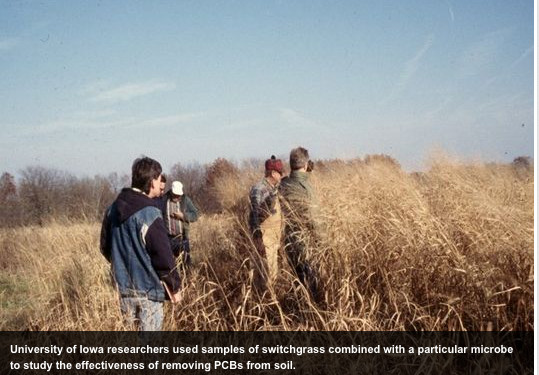Civil and environmental engineering professor Jerry

Schnoor — whose studies focus on groundwater contamination and hazardous waste remediation — has studied switchgrass in the past but teamed up with Mattes on this recent project because of his expertise in the effects of microbes when interacting with other agents. The duo — who also worked with researchers Dingfei Hufrom, Yi Liang and Richard Meggo on their recent study — hope to get the funds they need to continue their studies.
“We always like to be able to continue our research. Sometimes it takes a lot longer or doesn’t get there just for money reasons,” Mattes said. “There’s a very good chance (we’ll get funding). We’re hopeful and keeping our fingers crossed.”
Mattes and Schnoor hope to hear a verdict on the funding by the middle of March. While their recent study was conducted in a lab, they hope with new grant money to be able to take their research out into the field.
Before being banned by Congress in 1979, PCBs were commonly used in products such as fluorescent light ballasts, cable insulation, oil-based paints and floor finishes. Improper disposal techniques led to thousands of sites across the country being contaminated with the chemical, which is now known to cause cancer as well as other health problems for the endocrine, immune, nervous and reproductive systems.
Some of these contaminated sites become known as brownfields, which according to the U.S. Environmental Protection Agency are “property, the expansion, redevelopment, or reuse of which may be complicated by the presence or potential presence of a hazardous substance, pollutant, or contaminant.” Schnoor and Mattes hope that these sites can be cleaned up by utilizing the technique they’ve studied. Schnoor said switchgrass is the ideal plant to clean up these sites because of its extensive root system, which can extend as deep as eight feet below the earth’s surface.
“Switchgrass is famous for its deep rooting and dense root mass,” he said. “Because it’s mostly the bacteria that do the work, (switchgrass) helps with multiplying and making a good home for the bacteria and multiplying their numbers so the degradation of the PCBs occurs faster.”
While PCB contamination in Iowa soil and waterways is not as severe as other parts of the country, Schnoor recalled contamination sites along the Mississippi River near his hometown of Davenport. One of the country’s most notorious contamination sites occurred along the Hudson River in New York state. Contaminated soils required dredging, meaning they needed to be removed from the river.
“What we would like to do is take those dredged soils and plant them intensely,” Schnoor said. “But instead, regulatory levels required them to ship the dredged material to a Texas landfill. Our (method) will be a cheaper, more green, more effective solution.”
If they receive funding to continue their study, Schnoor and Mattes hope to work with the town of Altavista in Virginia. Altavista has experienced massive PCB contamination in its wastewater lagoon, and efforts to remove these toxins will cost millions of dollars, which is too costly for the town with a population of just 3,450, according to 2010 census data. Schnoor said furthering the switchgrass-proteobacteria research is crucial so towns like Altavista have an affordable solution to an expensive problem.
“There’s so many of these sites around the country that it would be wonderful if we could come up with a solution to cleaning them up that didn’t bankrupt small towns and industries.”